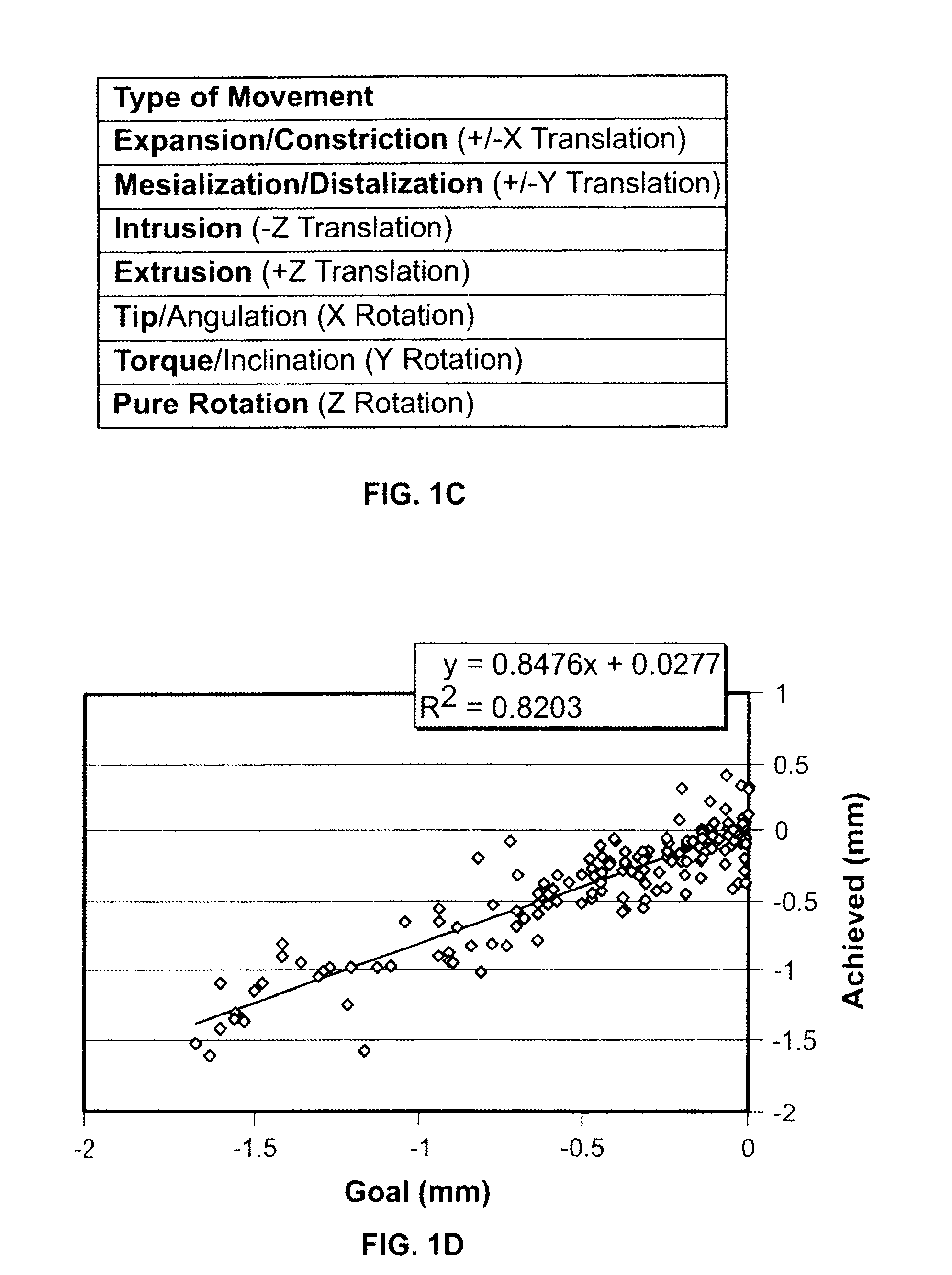Method and system for optimizing dental aligner geometry
a technology of aligner geometry and optimization method, applied in the field of computational orthodontics and dentistry, can solve the problems of stress in the appliance, difficult gripping of the dental appliance, and inability to move teeth to the desired target position
- Summary
- Abstract
- Description
- Claims
- Application Information
AI Technical Summary
Benefits of technology
Problems solved by technology
Method used
Image
Examples
Embodiment Construction
[0050]Digital treatment plans are now possible with 3-dimensional orthodontic treatment planning tools such as software from Align Technology, Inc. or other software available from eModels and OrthoCAD, among others. These technologies allow the clinician to use the actual patient's dentition as a starting point for customizing the treatment plan. The software technology available from Align Technology, Inc., uses a patient-specific digital model to plot a treatment plan, and then use a scan of the achieved or actual treatment outcome to assess the degree of success of the outcome as compared to the original digital treatment plan as discussed in U.S. patent application Ser. No. 10 / 640,439, filed Aug. 21, 2003 and U.S. patent application Ser. No. 10 / 225,889 filed Aug. 22, 2002. The problem with the digital treatment plan and outcome assessment is the abundance of data and the lack of standards and efficient methodology by which to assess “treatment success” at an individual patient ...
PUM
 Login to View More
Login to View More Abstract
Description
Claims
Application Information
 Login to View More
Login to View More - R&D
- Intellectual Property
- Life Sciences
- Materials
- Tech Scout
- Unparalleled Data Quality
- Higher Quality Content
- 60% Fewer Hallucinations
Browse by: Latest US Patents, China's latest patents, Technical Efficacy Thesaurus, Application Domain, Technology Topic, Popular Technical Reports.
© 2025 PatSnap. All rights reserved.Legal|Privacy policy|Modern Slavery Act Transparency Statement|Sitemap|About US| Contact US: help@patsnap.com



